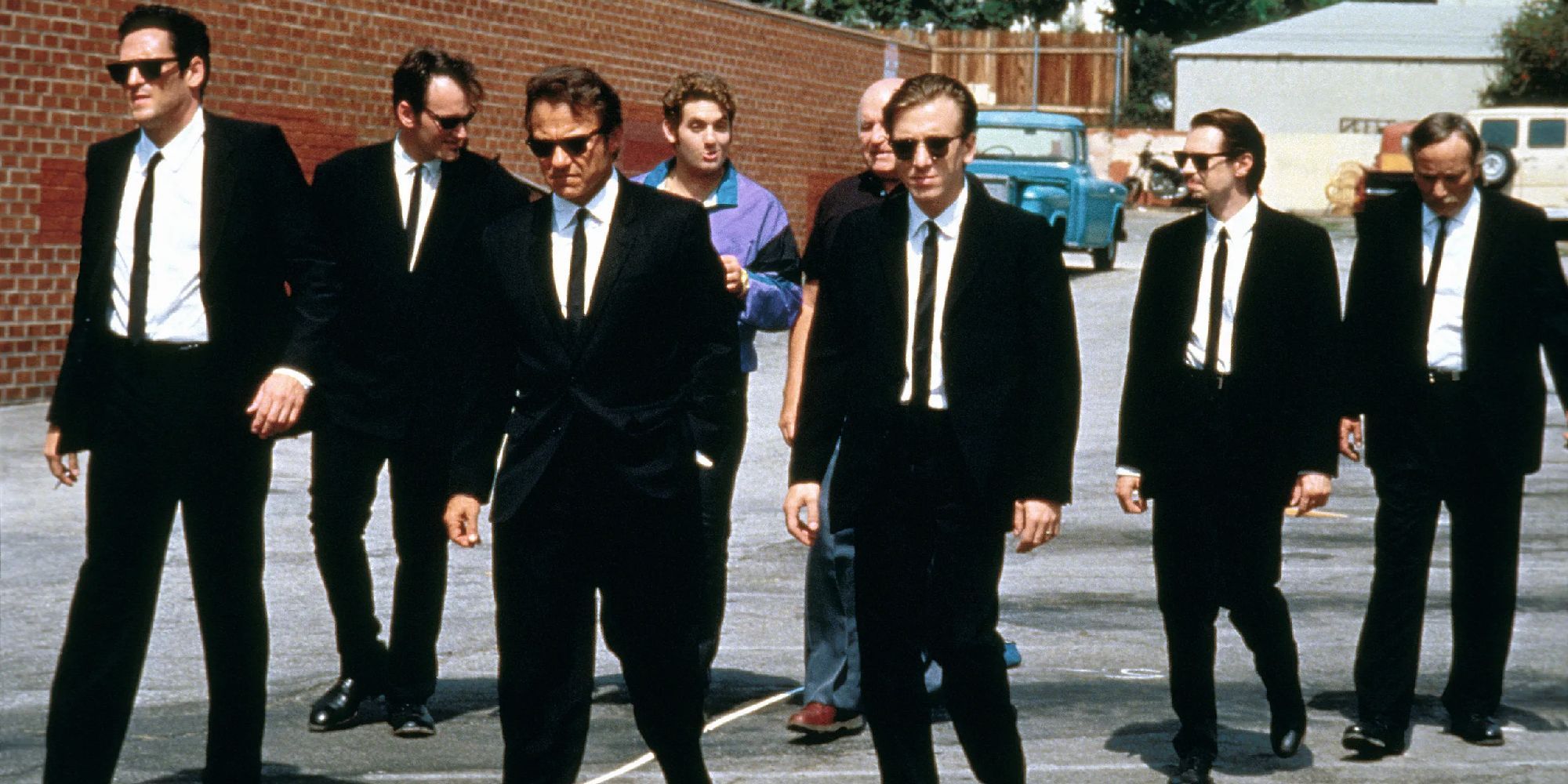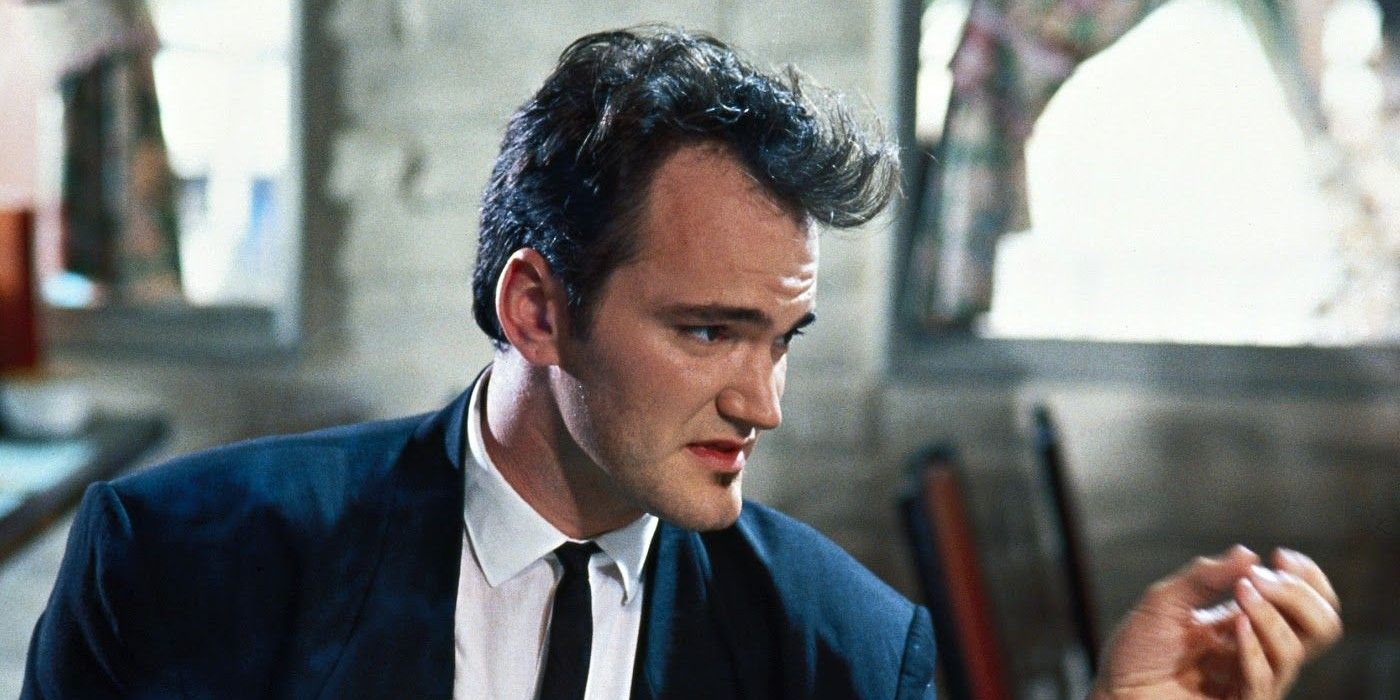Why City on Fire & Reservoir Dogs Make for a Perfect Double Feature
Quentin Tarantino has always been wildly unapologetic about jacking the coolest shots and the most moving facets from other movies. As a matter of fact, it has become one of his signature trademarks, as he searches the hallowed classics and the garbage bins of film history and brings them his own brand of absurd, humorous, and violent depictions. This is evident in his illustrious career, from the tips of the hat to Lady Snowblood in Kill Bill, the French New Wave influences in Pulp Fiction, to the tributes to Leone in the entirety of his work. Looking back, his first foray into full-length features was the world's introduction to his manic cannibalization of the movies: the timeless story of a blood-filled robbery gone wrong, Reservoir Dogs.
Reservoir Dogs acquaints the viewers, in signature Tarantino non-linear fashion, to the story of Mr. Orange (Tim Roth), an undercover cop who infiltrates the circle of crime boss Joe Cabot (Lawrence Tierny), and son Nice Guy Eddie (Chris Penn). They form a team who goes by codewords to protect each other's identities, composed of Mr. White (Harvey Keitel), Mr. Pink (Steve Buscemi), Mr. Blonde (Michael Madsen), Mr. Brown (Quentin Tarantino), and Mr. Blue (Eddie Bunker), and decide to rob diamonds from a jewelry store. Tarantino deliberately does not show the heist, and the viewers are left to witness and slowly unpack the bloody aftermath of the disastrous mission. From a cinematic perspective, this turned out to be for the best as instead of showing a routine sequence of thievery, it made the audience use their imagination ato fill in the blanks. While it was in hindsight, a brilliant choice, some are left searching for concrete answers regarding the details of the botched job. Enter Ringo Lam's soulful and violent Hong Kong action flick, City on Fire, the film that was the obvious source material for Tarantino's picture, and one that he openly credits as its influence. In a similar vein, City on Fire tells the story of Ko Chow (Chow Yun-fat) who decides to take over his deceased partners undercover duty of infiltrating a crime ring. Slowly, he gains the trust of Fu (Danny Lee) and gets into their circle. Together with their group of thieves, they similarly decide to rob a jewelry store, a simple task that completely gets out of hand. As it progresses, it would appear that the material Tarantino pillaged for this picture provides a clear-cut explanation, acting as a piece to the puzzle of those who wish to uncover the events.
While Reservoir Dogs Narrates, City on Fire Shows
While Tarantino opts to merely talk about the heist, City on Fire provides a blood-spattered blow-by-blow account. By framing Ko Chow and Mr. Orange and Mr. White and Fu as two different iterations of the same characters in parallel universes, the sewn narratives begin to unravel. In Reservoir Dogs, Tarantino blasts the audience with a huge stroke of contrast, as after the dialogue-filled coffee shop sequence, we immediately cut to a bleeding Mr. Orange comforted by a panicking Mr. White. As they reach the rendezvous, a warehouse in an undisclosed location, they meet with Mr. Pink and they narrate the events of the failed operation, specifically blaming Mr. Blonde for killing the salesperson who sounded the alarm system. In Lam's robbery scene, Ko Chow, Fu, and their associates proceed to the jewelry store and robs the joint at gunpoint. Unbeknownst to them, they are constantly being monitored by the Police, but the surveillance experiences a few hiccups. While it would appear that everything was going to plan, the store alarm rings, and they mercilessly shoot the clerk who triggered the system. In essence, Tarantino creates an existential void in his picture, while Lam spectacularly shows, in all of its blood and mayhem, the driving force of the two movies.
Two Shades of the Same Paint
While the absence and presence of the heist in the two films act as the Yin to each other's Yang, there are moments that are presented in both of them, albeit in different signature strokes. Digging deep into the occurrences of the ensuing chase, Reservoir Dogs flashes back to a scene where Mr. White and Mr. Orange spot a patrol car on their tail, and Mr. White with two guns in hand, riddle the officers with bullets as Mr. Orange watches helplessly. As they move to steal a car to go to the warehouse, the frightened citizen pulls out a revolver and shoots Mr. Orange in the gut, to which he retaliates and ultimately kills the innocent bystander. Tarantino takes this from a similar scene in Lam's work. When Ko Chow and the criminals are driven into a corner by the chasing policemen, Fu takes up all of his might and comes out with all guns blazing at a patrol van, violently taking the lives of those inside. Incidentally, one cop tries to fire a shot at Fu, but Ko Chow takes the bullet in the belly, but successfully kills the gunman. With the glaring influences almost too on-the-nose, Reservoir Dogs not only picks up the essential in City on Fire, but also re-imagines an already perfect picture into another filmmaker's vision. It is a stellar case of how authentic and how visible the auteurial prowess of individual filmmakers are, and proves the authenticity of one's personal touch.
Framing the 'Tarantinoesque'
While it may have a ton of similarities, it is completely unfair to assume that Reservoir Dogs is only an imitation of City on Fire. Viewing film in this lens misconstrues the whole point of movies, and to an extent, art itself. One can make the argument that every single artist, which include filmmakers, has stolen from those that came before them in one way or another. Tarantino understands and embraces this postmodernist nature and instills his own flair to the material resulting in a copy that's not exactly a copy, a work that's more of a homage than a reproduction. This is one of the main facets of "Tarantinoesque", the official term to describe works that embody his brand of filmmaking.
One can see this brand of recreation in the climaxes of the two pictures. In City on Fire, the bleeding Ko Chow, Fu, and the crime ring retreat to a warehouse where they are surrounded by the Police. Sensing a rat inside their circle because of the quick response by the authorities, the leader incriminates Ko Chow since he is the newest member to the group, resulting in a Mexican standoff with Fu defending his honor. The cops arrive and rain bullets on the place, and Chow admits that he is indeed an undercover policeman. Fu is taken by the authorities, while Chow dies from his wounds. Reservoir Dogs on the other hand, is more deliberate in the pace of its final scene. Essentially, it repeats the same formula, with Mr. Orange being suspected as a rat by Joe and Eddie, but is strongly defended by Mr. White. As compared to Lam's abrupt stoppage of the confrontation, Tarantino blows up the tension, and they fire at each other, with Joe and Eddie laying dead, and Mr. White severely wounded. As they lay dying, Mr. Orange confesses, and as the Police enter the premises, Mr. White commits suicide-by-cop by shooting his "friend".
Taken side-by-side, there is a weird paradoxical nature to these two scenes. They are telling the same story, but at the same time, telling it in two opposite ways. Lam's film embodies the concoction of destruction and flamboyance synonymous with the Hong Kong action film. Tarantino's feature on the other hand, is more personal, intricately crafted like an independent film with select instances of violence. This is Quentin's specialty: taking one great part of a great movie, and transforming it according to his own worldview.
As a whole, Reservoir Dogs and City on Fire works perfectly as a double feature, with each and every nuance answered by the presence and or absence of an element in each film. Like Peanut Butter and Jelly, Bacon and Eggs, and Coffee and Cigarettes, each of these flicks could be enjoyed individually, but experiencing what both have to offer brings a sense of fulfillment. By watching both Tarantino and Lam's work, it triggers a figurative cinematic chemical reaction, the aftermath of which is the satisfaction of knowing the unknown, leaving the viewer stuck in the middle of two great pieces of cinema.
View the rest of the story here

Comments
Post a Comment